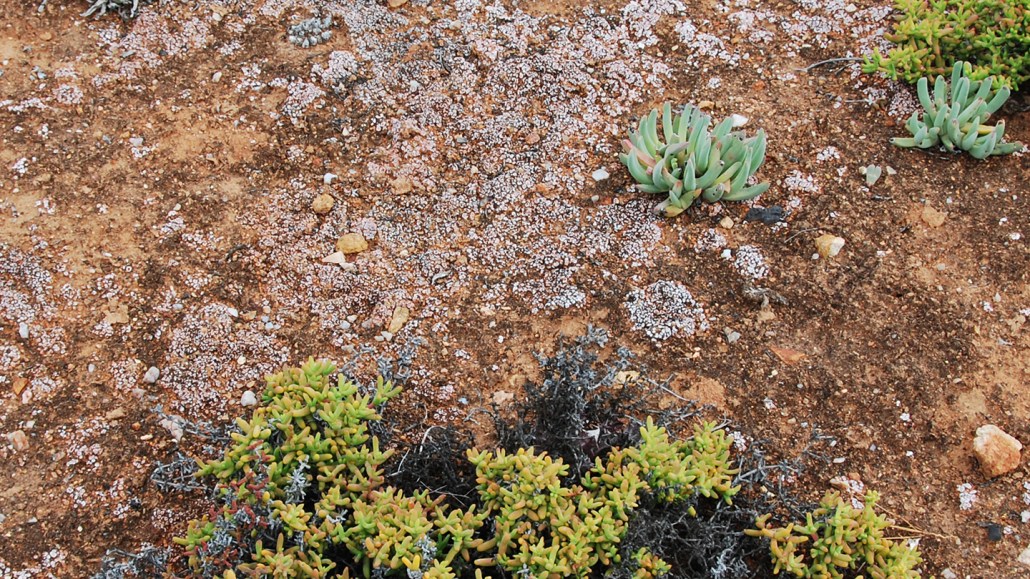Biocrusts reduce global dust emissions by 60 percent
The microbe-built crusts face threats from climate change and land-use changes

Lichens (whitish-pink) and cyanobacteria (dark brown to blackish) form biological soil crusts that carpet the ground between succulent plants and shrubs in the Succulent Karoo ecoregion in South Africa.
B. Weber